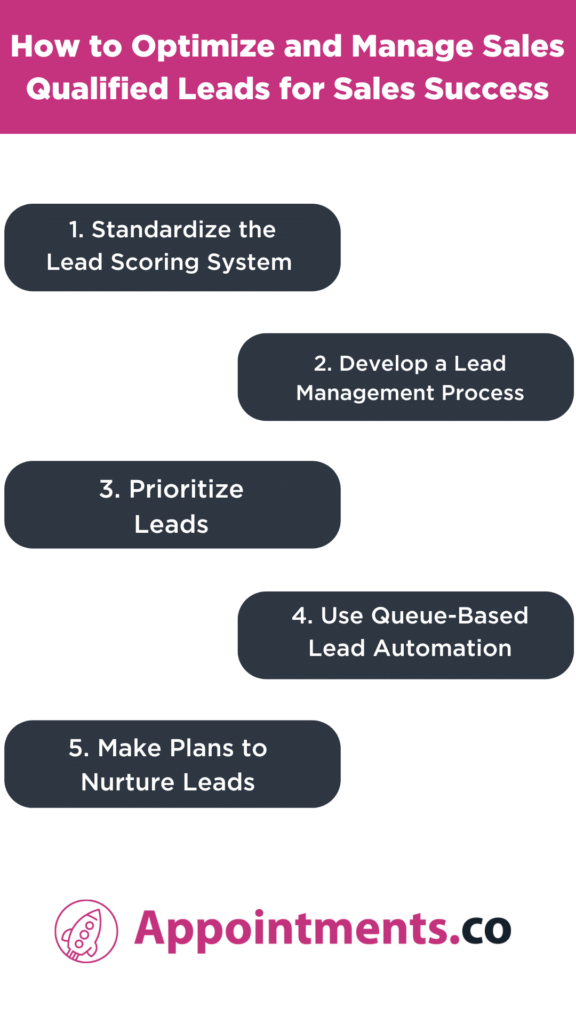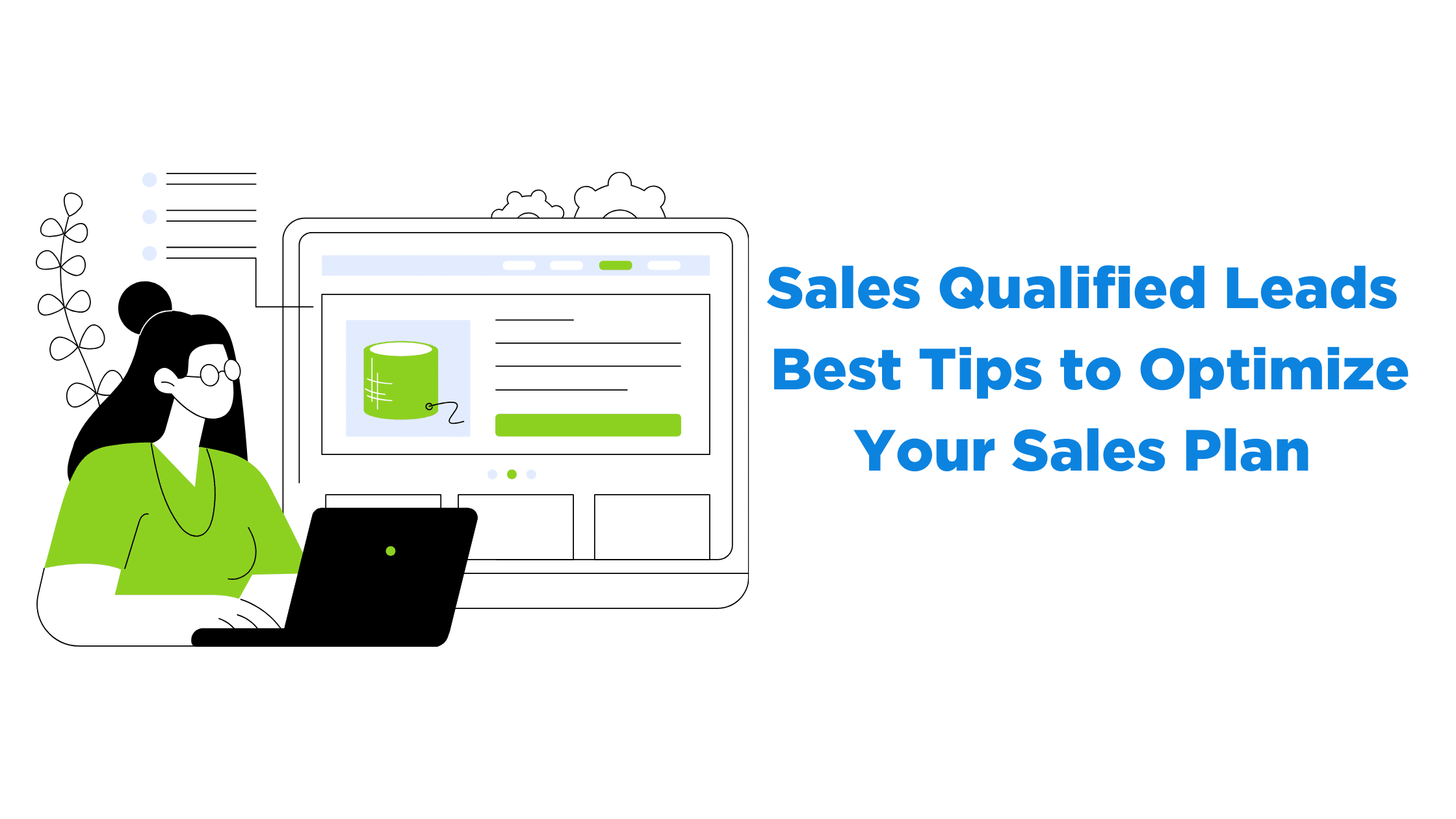Managing sales qualified leads can be a challenging and expensive process for sales teams. Many businesses struggle to do it effectively, which can result in a low conversion rate of sales qualified leads. Inadequate lead management software, organizational issues, and varying levels of diligence among salespeople contribute to this problem.
If you’re looking to improve inside sales productivity and effectively manage your leads, you’re in the right place. We’ll guide you through the steps to optimize and manage your leads to ensure a smooth flow through the sales pipeline. Our focus is on preventing any leads from being overlooked or neglected.
To achieve this, it’s important to implement a sales engagement solution that is specifically designed for the unique challenges you face during the sales process. This solution can help you maximize sales and your effectiveness in the lead management process.
Table of Contents
- What are Sales Qualified Leads?
- Why Are Sales Qualified Leads (SQLs) Important?
- How to Optimize and Manage Sales Qualified Leads for Sales Success
- How to Increase Sales Qualified Leads (SQLs)
- FAQs
- The Importance of Optimize Sales Success with Sales Qualified Leads
What Are Sales Qualified Leads (SQL)?
Sales qualified leads (SQL) are the potential customer who has been researched and evaluated by the marketing team as ready to be passed on to the sales team. These prospects have moved beyond the initial engagement stage and have shown a higher level of interest in your solutions.
Sales Qualified Leads are considered a good fit for your product or service as they have expressed the intention to purchase and meet your qualification criteria. They are further along in the sales cycle compared to marketing qualified leads (MQLs) and are closer to making a buying decision.
Now that we understand the difference between Marketing Qualified Leads and Sales Qualified Leads, we can focus on optimizing and managing these qualified leads more effectively.
Why Are Sales Qualified Leads (SQLs) Important?
Having clear definitions for the different stages of the sales lifecycle, as well as a robust lead qualification framework is crucial for maximizing marketing and sales efficiency. It doesn’t matter how many contacts you have in your database; what matters is aligning your marketing and sales efforts. This alignment, often referred to as “smarketing,” can significantly boost the conversion rate of incoming sales qualified leads.
By understanding the level of interest of your contacts, you can tailor your messaging accordingly. Furthermore, personalizing your messaging and content based on the lifecycle stage of Sales Qualified Leads can greatly enhance your lead nurturing efforts and increase your chances of success.
How to Optimize and Manage Sales Qualified Leads for Sales Success

1. Standardize the Lead Scoring System
To determine whether an MQL should be promoted to Sales Qualified Leads (SQL), it’s essential to have a standardized lead scoring system in place. Not all leads are equal, and not every MQL has the potential to become a paying customer. Therefore, evaluating and assessing leads using a well-structured lead scoring system is essential.
Lead scoring involves using a predefined methodology to determine if a lead is sales-ready. First, you need to establish the criteria and data points that define a qualified lead. Assigning point values to these criteria allows you to numerically express the lead’s score.
For example, you can assign points based on factors, such as website visit frequency, level of personal information shared, and engagement with your brand across various channels.
Evaluating lead behavior is also important in lead scoring. Actions, like downloading resources, responding to emails, scheduling a demo, or booking a meeting indicate interest, but they receive different points based on their likelihood to purchase a product.
By implementing a lead scoring system, you can effectively prioritize and focus on leads that show a higher likelihood of converting, saving time and effort for your sales team.
2. Develop a Lead Management Process
Once you’ve qualified a lead, it’s important to establish a sales process for your inside sales team to guide them through the sales lifecycle. Evaluate your sales environment to determine what strategies are effective and what needs improvement.
Create a formal, step-by-step plan that outlines the specific actions and timelines your sales representatives should follow. Customize the plan based on your unique value proposition and include guidelines for following up with leads at regular intervals, spanning from weeks to years.
Consistency is key, so ensure that your sales representatives adhere to a consistent schedule of phone calls and complement them with value-driven and content-rich emails to maximize sales effectiveness.
The primary objective of your sales plan is to leverage insight from past successes and replicate them in a consistent sales process that generates predictable and repeatable results. By implementing a well-defined sales plan, you can enhance sales performance and drive consistent business growth.
3. Prioritize Leads
Creating an effective plan to prioritize and allocate leads to your sales representatives is essential for maximizing your sales productivity. By ensuring that the right leads are assigned to the right team members at the appropriate time, you can significantly increase the profitability of your leads.
An efficient lead prioritization and distribution process can transform average leads into high-value opportunities. For instance, leveraging features, like VanillaSoft’s Lead Routing can automatically assign the best and most promising leads to your sales representatives, resulting in shorter sales cycles and increased chances of closing deals.
Implementing, such a system streamlines the lead management process, reduces response time, and improves overall sales efficiency. By optimizing lead allocation, you can enhance your team’s performance, and drive greater success in converting leads into sales.
4. Use Queue-Based Lead Automation
Automated sales solutions, like queue-based platforms and lead management, assign qualified leads to sales representatives based on priority. Managers can easily categorize and prioritize leads that are then routed to sales teams in the designated order.
After each call, the next lead is presented immediately, ensuring a smooth and efficient sales process. This conversion approach optimizes productivity and ensures timely attention to valuable leads.
5. Make Plans to Nurture Leads
Keep in mind that you cannot immediately qualify every lead due to various factors. Some leads may not be ready to buy at that moment, but could become your customer in the future. Sales representatives should nurture these leads over time to build a relationship and trust by consistently sending targeted messages based on research. This also helps the sales teams to connect with prospects on a deeper level.
Queue-based platforms facilitate lead nurturing by allowing sales representatives to customize communication based on contact information and triggers. They can deliver the perfect message to prospects at each stage of the sales cycle, increasing the likelihood of a sale.
Following up with leads throughout the sales lifecycle, even if it spans months or years, is important. Even leads that were once considered inactive (“zombie leads”) can be revived with the right email campaign.
How to Increase Sales Qualified Leads (SQLs)
Sales managers have the greatest incentive to pursue only those leads they can successfully sell to and increase their closure rates. By chasing poor quality leads that have not shown strong signs of being ready to buy, their closure rates can take a tumble.
Even worse, it is a major point of frustration for sales representatives to struggle to close sales not because their pitches are weak but because the leads are simply not ready or interested enough to buy.
So if your sales closure rates are low, before reworking your sales pitches, maybe consider the quality of the leads you are sending down to sales.
Here Are Nine Ways to Generate Qualified Leads Through Content Marketing:
- Use Facebook Ads to offer lead magnets.
- Include content upgrades within your content.
- Collaborate on guest blogging opportunities.
- Host webinars in partnership with other experts.
- Create quizzes and surveys to engage your audience.
- Optimize your content for long-tail SEO keywords.
- Enhance your landing pages to improve conversions.
- Publish high-quality content on LinkedIn.
- Utilize effective call-to-actions and compelling offers.
By implementing these strategies, you can attract and capture leads who are genuinely interested in your offers.
FAQs
1. What is a lead vs sales qualified lead?
A lead is an individual or an organization that has shown interest in your business but cannot be qualified as a potential customer yet. But a sales qualified lead has been passed as a potential customer to the sales team.
2. What comes after sales qualified lead?
Sales qualified leads will move to the next stage while the marketing qualified leads will be continued to be nurtured until they can be qualified as sales ready leads. These SQLs will be handed over to the sales team for further transactions.
3. How do you determine sales qualified leads?
Some of the simple criteria for qualifying sales leads are as follows:
– They have shown significant interest in your product or service
– They have a need for your product or service
– They have the ability to afford your product or service
Related Reads
The Importance of Optimize Sales Success with Sales Qualified Leads
To optimize the lead management process for your inside sales team, follow these steps to clearly define what constitutes a qualified lead, develop a step-by-step lead management process for your sales team to follow, prioritize leads by using a queue-based lead management system to simplify the process, nurture your leads over time by building relationships and delivering targeted messages, and close the lead by successfully converting it into a sale.
By implementing a sales engagement solution that prioritizes, distributes, tracks, nurtures, and follows up on leads at every stage of the sales process, you can regularize lead management and maximize effectiveness.
If you have been looking for services that can help you boost your sales to another level, make sure to reach out to us for effective appointment-setting services that can help you close a sales deal.
Illustrations – Storyset



